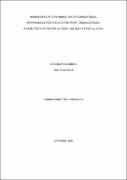| dc.description.abstract | UNICEF Uganda is one of the fast growing UN agencies working in Uganda in terms of funding
with an annual budget of over USD. 71 million, expanded programmes and projects and
increasing number of staff and consultants to implement its programmes. Its performance and
impact remains outstanding among the not-for-profit organisations. However in Uganda, for most
of the international not for Profit organisations when a post falls vacant the period taken to fill
such posts is actually very long ranging from six months to two years. During such a period, the
organisation is missing the essential staff to carry on the essential activities of the organisation
hence weighing down its performance.
In a quest to explore the effect of Human Resource Planning on the Performance of the Not-for profit organisations using UNICEF as a case study, the research set out to access this basing on
three objectives: to examine the relationship between succession planning and organizational
performance of UNICEF Uganda, to establish the relationship between Contingency planning and
organizational performance of UNICEF Uganda and to investigate the influence of competency
planning on organizational performance of UNICEF Uganda.
The study undertook a review of literature on the subject, an in-depth review of the organisation’s
performance over years. The survey involved both staff and top management. Qualitative and
quantitative data were gathered through a document review and interviewer-administered and
self-administered questionnaire schedules. The sample size was 121, and 107 respondents
returned the questionnaires, 14 out of 16 key informants were interviewed. Qualitative data were
analysed with thematic analysis method while quantitative data were analysed using MS Excel
and STATA to derive the mean and Standard deviation. SPSS was used to establish the
correlations.
The findings of the study reveal that deliberate Human Resource Planning in UNICEF Uganda
exists and to a greater extent contribute to its outstanding organisational performance. Human
Resource planning is more looked at from the angle of contingency planning, making sure that
there is business continuity in case of emergency. The approach used is the staff back up system
where a staff acts for the vacant post for a period greater than 6 months. More emphasis is put on
competency planning, building the capacity of its staff through continuous training, coaching,
emphasizing individual performance plans, evaluating them regularly and giving continuous
feedback to staff which has proved significant in improving performance. The study found out
that there is inadequate succession planning in UNICEF. Planning the potential replacement of
current leadership positions is completely lacking.
Overall, there is a positive and significant relationship between Succession Planning, Contingency
Planning, Competency Planning and Organizational Performance as per r values of 0.961, 0.749,
and 0.875 P<0.01 respectively. The overall adjusted r is 0.18 implying that HRP contributes 18%
to the overall organizational performance in UNICEF.
In light of the above a number of recommendations and conclusions were drawn which if
implemented, would contribute more on improving organisational performance. These include;
Developing a succession plan, KPI on filling a post to be calculated from when the time when
post is vacant to when its actually filled, reduce on vacancy period to a maximum of 3 months,
use a talent pool to fill a vacant post even when it has only one candidate, pay Special Post
Allowance to all staff, contingency plan should be documented and communicated to all staff,
allocate the training budget to each section, promote staff who perform exceptionally without
competition and measure the absorption capacity of partners before disbursing funds. | en_US |


